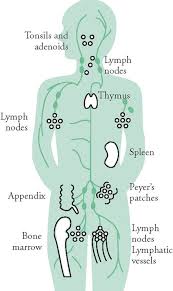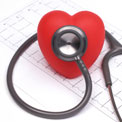banner468
Early to Burn? Morning Exercisers Have Longer, Harder Routines
08:24
Health magazine
Turns out that the time you exercise is as important as the moves you do—and mornings get top marks. Researchers at Bangor University in the United Kingdom found that people exercise longer and harder in the a.m., possibly because that’s when they feel more alert and energetic.
That’s good to know because higher-intensity workouts make it easier to burn calories and tone your body. Don’t do mornings? Fit in some exercise right after work.

Here's welcome news: You may have inherited your mom's slow-mo metabolism, but you’re not stuck with it. New research shows you can trick your body into burning calories more efficiently, especially if you hit the gym. By strength-training just a couple of times a week, for example, you’ll reverse 50% of the seemingly inevitable metabolism slow-down that comes with age, says Gary Hunter, PhD, a professor of human studies at the University of Alabama at Birmingham. So take control of your metabolism by making these boosters part of your routine—and (finally) stop sweating every cookie.
Kick it up a notch
 ancor
ancorHere's how to do it: Exercise for 5 minutes at 3.5 mph. Increase your speed to 4 mph for 60 seconds. Then go back down to 3.5 mph for 90 seconds. Repeat the entire sequence 5 times, twice a week. (To get a more challenging workout, increase the incline or your pace.)
Get your omega-3's

Make some muscle

Turn to (green) tea

Green tea has long been heralded for its antioxidant polyphenols. But new evidence shows the active ingredient, catechin, may crank up metabolism. Researchers conducted a series of studies in dieters and found that those who went green lost more weight than those who didn't, suggesting that catechins may improve fat oxidation and thermogenesis, your body's production of energy, or heat, from digestion. But how much do you have to drink? According to one study, if you drink five eight-ounce cups of green tea a day, you can increase your energy expenditure by 90 calories a day. Sounds like a lot of tea, but it's not hard to do if you also drink it iced.
Don't slash those calories

It's one of the most frustrating realities of dieting—if you cut out too many calories, your metabolism thinks times are lean and puts the breaks on fat-burning to conserve energy, Hunter explains. Here’s the trick to keeping your metabolism revved up while dieting: Eat enough calories to at least match your resting metabolic rate (what you'd burn if you stayed in bed all day; calculate yours here). That's about 1,330 calories for a 5-feet-4-inch, 150-pound, 40-year-old woman.
Enjoy the afterburn

Exercise is a gift to yourself that keeps on giving. In a phenomenon known as excess postexercise oxygen consumption (EPOC), your body can take hours to recover from a robust workout (one intense enough that you can't hold a conversation) and return to its previous resting metabolic rate. The windfall: Your body is actually burning more calories than it normally would—even after you've finished exercising. There’s a catch, though. The better shape you're in, the less benefit you'll get, because your fit body replenishes its energy stores efficiently. You can improve your burn by increasing how often or how hard you work out (think intervals), suggests Walt Thompson, PhD, professor of kinesiology and health and nutrition at Georgia State University.
Get started in the a.m.

Make sure you eat breakfast. Eating a nutrient-rich morning meal (like oatmeal with almonds and berries, or a spinach-and-feta omelet with a slice of whole-grain toast) shortly after getting out of bed literally wakes up your metabolism. "Eating breakfast gets the engine going and keeps it going," Hyman explains. It's hard to argue with these results: According to the National Weight Control Registry (an ongoing study that tracks 5,000 people who lost an average of 66 pounds and kept it off more than five years), 78% of those who keep it off eat an a.m. meal every day.
Go ahead and graze

Noshing throughout the day is a proven strategy to help you curb hunger and eat fewer calories overall. Now, experts are promoting nibbling versus gorging as a way to keep metabolism running by holding blood sugar levels steady and preventing weight-gain-promoting insulin spikes. Enjoying six small meals a day should do the trick; keep them around 300 calories each, or divide your usual day's calories by six.
Trim the trans fat

You’ve heard they're bad for you. But trans fats also slow down your body's ability to burn fat. "They have an altered shape and make your biochemistry run funny," Hyman says, explaining that trans fat binds to fat and liver cells and slows metabolism. Eating trans fat can also lead to insulin resistance and inflammation, both of which cripple metabolism and can cause weight gain.
Go organic

If you’re on the fence about whether to buy organic, this news may sway you: Fruits, vegetables, and grains grown without pesticides keep your fat-burning system running at full-tilt because they don’t expose your thyroid to toxins, Hyman says. Nonorganic produce, on the other hand, “blocks your metabolism mainly by interfering with your thyroid, which is your body’s thermostat and determines how fast it runs,” he explains.
Think protein

Your body digests protein more slowly than fat or carbs, so you feel full longer (this is especially true when you have it for breakfast). Plus, it may also give your metabolism a bump. In a process called thermogenesis, your body uses about 10% of its calorie intake for digestion. So, because it takes longer to burn protein than carbs or fat, your body expends more energy absorbing the nutrients in a high-protein diet. Another bonus: One recent study from Purdue University found that diets higher in protein may help preserve lean body mass, which is the best fat-burner of all.

When it comes to losing weight, the little things add up—trying just one new thing every day can quickly make a big difference. With that in mind, we’ve taken science’s best weight-loss strategies and created a week’s worth of slimming to-do’s.
Sunday: Shoot it, and shed pounds.
Studies show that recording meals may help you lose up to 5% of your weight, says Robert A. Carels, PhD, an associate professor in the psychology department at Bowling Green State University. Start today: Snap before and after photos of each meal with your camera phone. Keeping a visual food diary is a more accurate way to see what and how much you’re eating, United Kingdom researchers say. Afterward, download the pics so you’ll have a record.

Taking a daily multivitamin may make you less hungry, two studies in the British Journal of Nutrition suggest; people who take one tend to weigh less and have lower BMIs.
Start today: Pop a multi with at least 100% of the RDA for vitamins included in the studies: chromium, copper, folic acid, iodine, manganese, molybdenum, niacin, pantothenic acid, riboflavin, thiamin, vitamins B6 and B12, and zinc.
Tuesday: Speed up to burn more calories.
Strength-training circuit-style torches more calories than the traditional way, says Jim Stoppani, PhD, author of the Encyclopedia of Muscle and Strength. Research shows that the shorter the rest period between sets, the more calories you blast off. “In addition,” Stoppani says, “doing a whole-body workout employs more muscle, which in turn burns more fat.”
Start today: Turn your usual strength-training routine into a circuit by doing one set of 15 reps for each exercise with no rest in between; wait 20 seconds and repeat the circuit twice.
Wednesday: Triple your C and burn more fat.
Regularly consuming 500 milligrams or more of vitamin C may help you burn 30% more fat while working out, according to research in the Journal of the American College of Nutrition.
Start today: Eat at least three servings of vitamin C–rich whole foods like citrus fruits, broccoli, and cantaloupe. Try this to knock a couple servings off: “Pack a vitamin C–rich, easy-to-transport snack, such as a mix of baby carrots, sugar snap peas, and cherry tomatoes,” suggests Debra Wein, RD, the president of Wellness Workdays, in Hingham, Mass.
Thursday: Have a gab session and drop pounds faster.
Not only can an exercise buddy help you show up for your workouts, but she can also help you melt fat faster too, says Tim Lohman, PhD, a professor emeritus at the University of Arizona, in Tucson, and an expert on the connection between exercise and body composition.
Start today: Create your own weight-loss network. “The buddy system works best when you can turn to someone you’re already friends with,” Lohman says. Meet at least once a week (even if it’s in cyberspace) to discuss obstacles and celebrate successes.
Friday: Color yourself slim.
An apple a day will do more than keep the doctor away—it’ll keep pounds off too. Filling up with a range of fruits and vegetables is an easy way to cut your calorie load, a recent study in the American Journal of Clinical Nutrition suggests.
Start today: “Follow the rainbow,” Wein suggests. “Do your best to eat from all of the color groups during the day.” Add blueberries to your cereal, snack on apples, and load your lunchtime salad with carrots, tomatoes, and peppers.
Saturday: Inhale and conquer cravings.
When we’re stressed we tend to look for quick-fix calories. “Yogic breathing offsets this. When you’re relaxed, you don’t have as much hunger pain,” says Ralph LaForge, an exercise physiologist in the endocrine department of the Duke University Medical Center. “People make better food choices when they’re relaxed.”
Start today: When hunger strikes, try this exercise from Kristen Eykel, creator of the DVD series, Yoga Emergency: The 12-Minute Workout. Rest your right thumb near your right nostril, ring finger and pinky by your left nostril. Close the left side and inhale through the right for four counts, then close your right nostril and hold for four counts. Open your left nostril and exhale through that side for four counts. Repeat cycle again on other side; continue alternating for at least a minute. You’ll relax in no time—and may even forget about that cookie you longed for.
health magazine

By Carolyn Hsu
Last summer I voluntarily chose to stop eating for 10 days. I gave up solid foods as part of the Master Cleanse.
At 5’6”, I couldn’t budge my scale from around 140, no matter how many times I tried South Beach or Slim-Fast (and yes, I realize my desire to lose was more about vanity than health). A colleague told me he’d permanently shed 20 lbs. on the Master Cleanse, a very controversial liquid diet that helped Beyoncé quickly slim down for her role in Dreamgirls. The no-solid-food rule sounded a little scary, but the thought of losing 10 lbs. fast was too tempting to resist. So I started poking around the Internet and found a surprising number of Master Cleanse tips—some useful (always stay near a bathroom) and some not (rub your belly to rid it of toxins).
I was ready to spend 10 days ingesting nothing but homemade lemonade. Here’s what happened:
Day 1: Every day I was supposed to guzzle 16 oz. of salt water in the morning, and sip a mug of hot laxative tea before bed. According to Google, this was supposed to eliminate years of waste accumulated in my body. That’s basically a fancy way of describing water-like diarrhea and killer stomachaches.
Day 2: I wasn’t as hungry as I expected to be and even felt more energized than normal. But that night I went to the movies and could smell my friend eating gummy worms two seats away. I had to sit on my hands so I didn’t reach over and steal some.
Day 3: Wanting to burn some extra calories, I spent the day walking around the city. Since you’re not eating anything on the cleanse, you’re not supposed to exercise—and I soon found out why. Feeling faint, I had to sit down on more than a few benches on my way home. “Are you insane?” my friend texted me mid-rest, begging me to stop.
Day 4: I woke up weighing 135—I’d finally broken my 140 plateau! Seeing the scale go down was exhilarating and addicting.
Day 5: Socially, it was an awkward week to cleanse. My colleagues and I were taking our new manager to lunch, and an old college professor wanted to have dinner. My new coworker asked if I wasn’t feeling well when I ordered a measly bowl of egg drop soup at a Chinese restaurant. Embarrassed by my no-solid-food streak, I faked an upset stomach.
That night my professor picked a steakhouse. After just two bites of steak and some asparagus, I realized there’s a reason you’re not supposed to eat solid foods while consuming all that laxative tea.
Day 6: I easily buttoned up a pair of skinny jeans that last fit when I was 18. I spent the majority of the day collecting recommendations for reputable tailors and vowing to do the cleanse seasonally.
Day 7: My tongue turned white a couple of days ago, which my Internet research said was normal. However, I wasn’t sure why it was normal because I’d never bothered to buy the Master Cleanse manual. I wasn’t supposed to stop cleansing until it returned to its normal color, which generally happens on Day 7. But it hadn’t changed yet, so it didn’t look like I was going back to eating anytime soon.
Day 8: Many people on the Master Cleanse claim that by Day 8, they wake up feeling like a new person. I woke up feeling very moody and uncomfortable. Whoever said that Day 8 is enlightenment needs to be enlightened. My weight hadn’t changed and I was ready to eat my own hand.
Day 9: The scale didn’t budge again and my tongue was still white. Was I on a Master Cleanse plateau? I changed my mind about doing this four times per year.
Day 10: Sitting on my couch at 11 p.m., counting down the minutes until midnight, I looked down and noticed that my thighs had turned to jelly. While I’d lost weight all over—and had finally shed my tummy rolls—I hadn’t expected to lose so much muscle mass.
At 12:01 a.m., I gobbled down some chocolate chip cookies, even though my tongue was still white. Ten days is the recommended minimum for cleansing—some people can go up to 40 days—but since I wasn’t losing any more weight, it no longer seemed worth it.
The aftermath
While I managed to maintain my 10 lb. weight loss for a few months, it wasn’t long before I started indulging in foie gras and chocolate cake again—and regained all the weight. I never forgot the thrill of losing so many pounds so fast, so I attempted the Master Cleanse again a few months later. But three days in, I realized that I was going down a dangerous path, and I quit.
Still, short-term fasting can be a safe way to get back to healthy eating habits. But instead of lemon and maple syrup, I bought a juicer. After a really indulgent week, I stick with freshly made fruit and vegetable juices for a day or two.
I also made an appointment with a nutritionist to get my yo-yo dieting under control. Keri Glassman, RD, the owner of Nutritious Life, a nutrition counseling practice in New York City, has seen more than a few clients try multiple fad diets only to regain the weight, too. I now follow her simple rules:
I eat when I start to get hungry and stop before I feel full.
I plan most of my meals in advance to make the healthiest choices possible.
I’m not perfect, but I cut down on the amount of processed foods, artificial sweeteners, alcohol, and caffeine in my diet.
It’s not a quick fix—and my progress takes a lot longer to show up on the scale—but it’s infinitely better than limiting myself to spicy lemonade.
more info
 | A recent poll found that one-third of Americans are skipping summer vacation this year, but a little escape can boost your health. So how do you create a healthy getaway surrounded by the same old distractions? Read our experts' top tips. Full Story A Sweet (and Healthy!) Summer Sip Try this antioxidant-rich sangria How a Weight-Loss Editor Survives a Family BBQ Avoid fat traps with these simple tips Green Guide to Home Cleaning Banish dirt and bacteria with these all-natural products |
| Also on Health.com |
| Deprivation diets like the Master Cleanse may actually hurt your heart | What they reveal about your heart's health | Here are 14 little moves to get you off to an easy start this summer |

Lymphoma is a cancer of the lymphatic system. The lymph nodes are found in various places around the body. There are multiple areas of the lymphatic system that can become cancerous. The area of the lymphatic system that is primarily affected will determine to a great extent, both the treatment and survival rate are determined by where in the body the cancerous cells are located and if they will be able to spread to other areas of the body.
The lymphatic system is made up of lymph nodes, lymphocyte cells, bone marrow of the thymus and long bones, the spleen, tonsils and adenoids as well as the lymph.
Other cancers can also start within the lymph nodes such as breast cancer. However breast cancer symptoms are not the same as lymphoma blood cancers.
The most common of blood cancer types is lymphoma. Many people confused lymphoma with leukemia, another type of blood cancer. Although they are both blood cancer diseases, they are not the same. About 56% of all patients affected with blood cancer have lymphoma
Hodgkin's lymphoma is named after Thomas Hodgkin. Mr. Hodgkin discovered this disease in 1832. There are two types of lymphoma named after Thomas Hodgkin. Hodgkin's and non-Hodgkin's lymphoma.
Lymphoma starts when the white blood cells, called lymphocytes, progressively multiply as a result of malignant changes within the lymph nodes and other areas in the body. They begin to grow in large numbers, pushing out healthy cells. This is what leads to the formation of tumors in the lymph nodes. Other areas affected can be the spleen and thymus and so forth.
Lymphoma can originate in the blood and bone marrow as well as the lymph nodes or lymphatic tissues, which are present in the stomach or intestines. From the bone marrow it can spread to many other parts of the body. While it is true that leukemia can spread from the bone marrow to the blood and lymph nodes, lymphoma is very different from leukemia. Lymphoma is the sixth most common cancer in men and the fifth most prevalent caner among women in the US.
There are two major types of Leukemia: myelogenous and lymphocytic. There are acute and chronic forms of each of these types. Although a great deal of information can be found both on-line and offline about lymphoma, it is always best to seek out medical care if you have any suspicious symptoms. Sadly, there are many different types of cancers. There are several types that affect the blood. Blood cancers that in the bone marrow are not to be confused with bone cancer.
It is always best for anyone that may suspect they have some type of health issues, regardless of the type, to discuss it with their doctor.
Kimberly Shannon enjoys helping people through her research of a variety of subjects, including lymphoma and other diseases along with treatment options and medical breakthroughs.

Being told I had leukemia was a shock and I don't mind admitting I burst into tears in the Consultants Office.
For me and my family, the most important thing was to get the treatment needed to fight this cancer of the blood. I hadn't been well for about eighteen months before the diagnosis, I felt very tired and unfit.
During a lovely holiday in Bermuda, I started to feel as though I had got the flu coming on and I had to go to see my doctor when I arrived home in England because by this time I couldn't breath very well. I had actually got legionnaires disease - which to put it simply meant that I had pneumonia, the TB I had as a child showed up on my X rays, and I was very ill for 6 weeks. I was taking 8 different antibiotics daily to fight this off.
Interestingly, my husband was fine - no symptoms at all - I realise now that my white blood cells were already being attached by the cancer and this in turn brought my immune system down.
It was over a year after getting legionnaires that I knew something was wrong because I found I needed to go to bed in the afternoon due to fatigue - I had only to knock myself lightly and I would have a big black bruise.
After visiting my doctor again, who referred me to the local hospital, where tests were done which included blood tests and a sample of my bone marrow was extracted from my hip bone - not a ery pleasant experience I have to say,the diagnosis came in that I had hairy cell leukemia, it's called that because the tumors look like they are covered in tiny hairs under the microscope.
The chemotherapy was simple - basically the chemicals needed to kill off the cancer cells are fed into you intravenously - I firstly had a liquid injected prior to the chemo, this was to stop me from being sick - thank goodness it worked. I was also lucky that my hair did not come out in clumps - I had severe dandruff but that was all.
I had to have 5 two hour chemo sessions Monday to Friday and I felt very weak by the last session, I was given some needles to inject myself with, these contained a solution described by the doctor as Fertiliser for White Cells. I did the injections and found I was getting rather a lot of discomfort in the hip and thigh bones - this was caused by the injections as the solution was stimulating my bone marrow and aiding the clean new white cells to grow (sorry I cannot explain it in more medical terminology) and that was what caused the discomfort. It was a small price to pay to get my blood clean again.
I have been very lucky, my sort of leukemia is treatable and as long as infections are avoided after and during the chemo, a full recovery after 6 months is perfectly achievable.
I have been in remission now for three years, visit my consultant every six months and he says my blood is very healthy, so I thank god for that and of course the medical profession who are just fantastic.
I am now officially retired as I am aged 62 years but I have just bought a franchise selling web sites, please feel free to look http://www.web2riches.co.uk

MDS or Myelodysplastic Syndromes, formerly known as pre-leukemia, are defined as a group of diseases in which the production of all types of blood cells is disrupted. The body of the person with MDS is no longer producing enough number of normal and healthy red blood cells, white blood cells or platelets.
The bone marrow normally produces 'blasts' or unformed cells that naturally form into red or white red blood cells or platelets. But the bone marrow of MDS patients produces blasts in abnormally large number but only a few blood cells develop properly.
Therefore, the term pre-leukemia is totally misleading because only a minority of MDS patients develop leukemia. Leukemia is the disorder in which white blood cells are produced in excessive amount.
The causes of MDS are still largely unknown despite the continuous efforts of researchers and scientists in this area. MDS is also believed to be the root cause of several types of cancer. Although the causes have not been definitively found, there are case studies that lead doctors to link MDS to prolonged exposures of a patient to toxic chemicals, particularly to benzene, and also close contact to radiation and strong pesticides. Since these instances are caused by environmental factors, doctors call such cases either treatment-related MDS or secondary MDS.
Some of the common symptoms of MDS are: anemia, abnormally pale skin and unexplained exhaustion (when red blood cell count is very low); and frequent infections, chronic fever, uncontrolled bleeding, and bruises easily (when white blood count is very low).
According to medical reports, anemia is the most common form of Myelodysplastic Syndromes.
 2008 - 2009 SimplexDesign. Content in my blog is licensed under a Creative Commons License.
2008 - 2009 SimplexDesign. Content in my blog is licensed under a Creative Commons License.- SimplexPro template designed by Simplex Design.
- Powered by Blogger.com.







